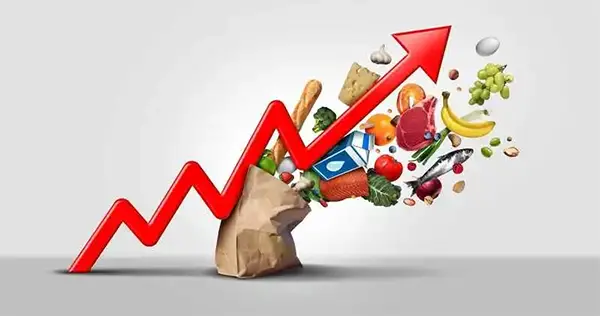In today’s dynamic economic landscape, businesses across industries grapple with escalating material costs. These price pressures can significantly impact profit margins, product pricing, and overall competitiveness.
The reasons behind these increases are manifold, including supply chain disruptions, geopolitical tensions, and environmental factors.
However, companies are not powerless in this scenario. This blog post explores effective strategies for managing rising material costs while maintaining product quality and customer satisfaction.
Understanding the Root Causes
Before diving into management strategies, it’s crucial to understand the specific factors driving up your material costs. Is it a supply chain bottleneck? Increased demand? Tariffs or regulatory changes? Identifying the underlying causes can help in formulating more targeted and effective strategies.
Strategic Sourcing and Cost Efficiency
One practical example of managing rising material costs is illustrated in industries requiring specific technical components, such as furnace repair businesses. These companies often face pressure from both the cost of raw materials and the specialized parts necessary for their services.
By employing strategic sourcing techniques, such as establishing long-term relationships with suppliers or utilizing bulk purchasing agreements, businesses can mitigate some of these costs.
For furnace repair companies, this might mean negotiating contracts with parts manufacturers that allow for fixed prices over a certain period, thus insulating them from market volatility. This approach not only helps in controlling costs but also ensures that the quality of repairs is not compromised due to cheaper, inferior materials.
Strategies for Managing Rising Material Costs
1. Diversify Your Supplier Base
Reliance on a single supplier or a concentrated geographic region for materials can leave your business vulnerable to price spikes. Diversifying your supplier base can not only provide leverage in negotiations but also reduce the risk of disruptions. Exploring alternative suppliers, both locally and globally, can help find more competitive pricing and ensure a more reliable supply chain.
2. Invest in Long-term Contracts
Locking in prices through long-term contracts can provide stability and predictability in your cost structure. While this approach might not always secure the lowest possible price, it shields your business from sudden spikes and allows for more accurate budgeting and forecasting.
3. Optimize Inventory Management
Effective inventory management can play a significant role in mitigating the impact of material cost increases. Just-in-time (JIT) inventory strategies can reduce holding costs and minimize the risk of overstocking expensive materials. However, it’s essential to balance JIT approaches with the risk of supply chain disruptions to avoid stockouts.
4. Embrace Material Substitution and Design Optimization
Sometimes, the best response to rising material costs is to reconsider the materials themselves. Material substitution, where a less expensive alternative is used without compromising product quality, can be a viable strategy. Similarly, design optimization—rethinking the product design to use materials more efficiently—can reduce costs without affecting the end product’s performance or appeal.
5. Leverage Technology and Automation
Investing in technology and automation can lead to significant efficiencies and cost savings in the long run. Automated processes can optimize material usage, reduce waste, and improve productivity. Advanced technologies like AI and machine learning can also provide insights into consumption patterns, predict future price trends, and suggest optimal purchasing strategies.
6. Strengthen Negotiation Tactics
Developing strong relationships with suppliers and honing negotiation skills can lead to better pricing agreements. Being well-informed about market conditions, material alternatives, and your suppliers’ business can provide leverage in negotiations. Additionally, consider collaborative approaches where you work with suppliers to identify cost-saving opportunities mutually.
7. Pass Through Some Costs Carefully
While not always desirable, there may be situations where passing some of the increased costs onto customers is necessary. However, this needs to be done carefully to avoid alienating your customer base. Transparency about the reasons for price increases, coupled with efforts to minimize the impact on product quality and service, can help maintain customer loyalty.
8. Focus on Value-added Services
Differentiating your offerings through value-added services can help justify higher prices if cost increases are unavoidable. Providing superior customer service, enhanced warranties, or additional features can make your products more appealing despite price adjustments.
Navigating the Challenges Ahead
The reality of escalating material costs requires businesses to be agile, innovative, and strategic in their approach to cost management. By understanding the drivers of cost increases and implementing a multifaceted strategy, companies can mitigate the impact on their operations and maintain a competitive edge.
The strategies outlined above are not mutually exclusive and can often be most effective when implemented in combination. Regularly reviewing and adjusting your approach in response to changing market conditions is critical.
Conclusion
Managing escalating material costs is a challenge that businesses cannot afford to ignore. However, it is possible to navigate these price pressures effectively with careful planning, strategic thinking, and a commitment to innovation.
By diversifying suppliers, optimizing design and inventory, leveraging technology, and focusing on value-added services, businesses can protect their margins and continue to thrive even in the face of rising costs. In summary, while the journey may be complex, the reward of sustaining business growth and profitability in a volatile market is well worth the effort. Adapting to the challenges of escalating material costs not only strengthens your business in the short term but also positions it for long-term success in an ever-changing economic landscape.



